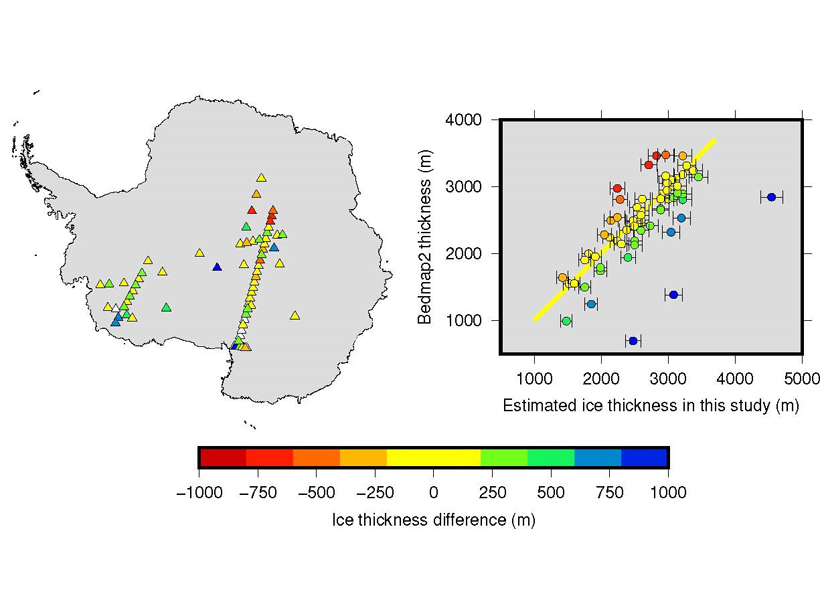Source: Journal of Geophysical Research: Solid Earth
Studies using cross-correlations of long records of background seismic noise to study waves traveling between seismic stations have proliferated in the last fifteen years. The most common application has been to study surface waves, which yield the overall shear-wave velocity structure, but do not have good resolution on the thickness of the layers. Phạm and Tkalčić [2018] use autocorrelations instead of cross-correlations to bring out multiply-reflected P and S (“body”) waves beneath each station, which can give better depth estimates of layers.
Body waves are more difficult to study than surface waves because of their smaller amplitude, and the authors provide a new method to enhance the high-frequency content of the records. These higher frequency records can better measure the waves reflecting from the strong velocity contrasts at the top between the ice and air, and at the bottom between the ice and the bedrock. This allows an estimate of the thickness and seismic velocity of the Antarctic ice cap. P waves alone can be retrieved using cheap seismometers that record only the vertical component of the seismic waves. If horizontal waves are also recorded, S waves can be studied. The ratio of the P and S wave velocities helps to determine properties of the ice that have been difficult to measure previously.
As noted by a reviewer, “This is an important topic since the Antarctic ice sheet is one of the largest freshwater reservoirs on Earth. The techniques developed in this paper can in the future be used to measure changes of ice thickness, which is relevant for climate change studies.” Moreover, the method is broadly applicable in other situations where there is a surface layer that has a strong velocity contrast compared to a layer beneath it, such as permafrost or sedimentary basins above bedrock.
Citation: Phạm, T.‐S., & Tkalčić, H. [2018]. Antarctic ice properties revealed from teleseismic P wave coda autocorrelation. Journal of Geophysical Research: Solid Earth, 123, 7896–7912. https://doi.org/10.1029/2018JB016115
—Martha Savage, Editor, JGR: Solid Earth
Text © 2018. The authors. CC BY-NC-ND 3.0
Except where otherwise noted, images are subject to copyright. Any reuse without express permission from the copyright owner is prohibited.

